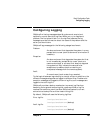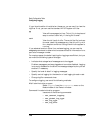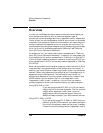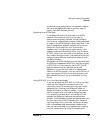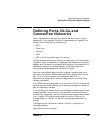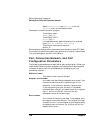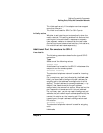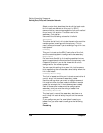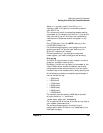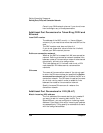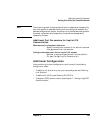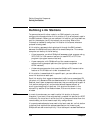
Chapter 5 147
Defining Connectivity Components
Defining Ports, DLCs, and Connection Networks
Defining Ports, DLCs, and
Connection Networks
A port represents the local end of a communications link as a unique
access point in the network. Each port is associated with a specific link
protocol, which can be any of the following:
• SDLC
• Token ring
• Ethernet
• FDDI
• X.25 or QLLC (qualified logical link control)
You can configure more than one port that uses a particular link protocol.
In general, a port corresponds to a single physical access point such as an
adapter card, but some link protocols (such as token ring) enable you to
define multiple ports for a single adapter. The different ports are
distinguished by addresses (such as the SAP number).
When you use the Motif administration program to define a port for a
particular link protocol, SNAplus2 automatically defines a DLC for the
port if a DLC of that type has not already been defined. For
command-line configuration, you must define the port and DLC using
different commands.
In an APPN network using token ring, Ethernet, or FDDI link protocols,
you can also use the SAP Configuration dialog to indicate that the port is
part of a connection network.
If you are using PU concentration, you can define a template that is used
to generate definitions for implicit link stations (link stations that are
not explicitly configured). Implicit link stations can support downstream
LUs. If implicit PU fields are modified while the port is active, the
changes affect any implicit link station instances generated after the
change.
To configure a port, connection network, and DLC, use one of the
following methods:
Motif administration program



